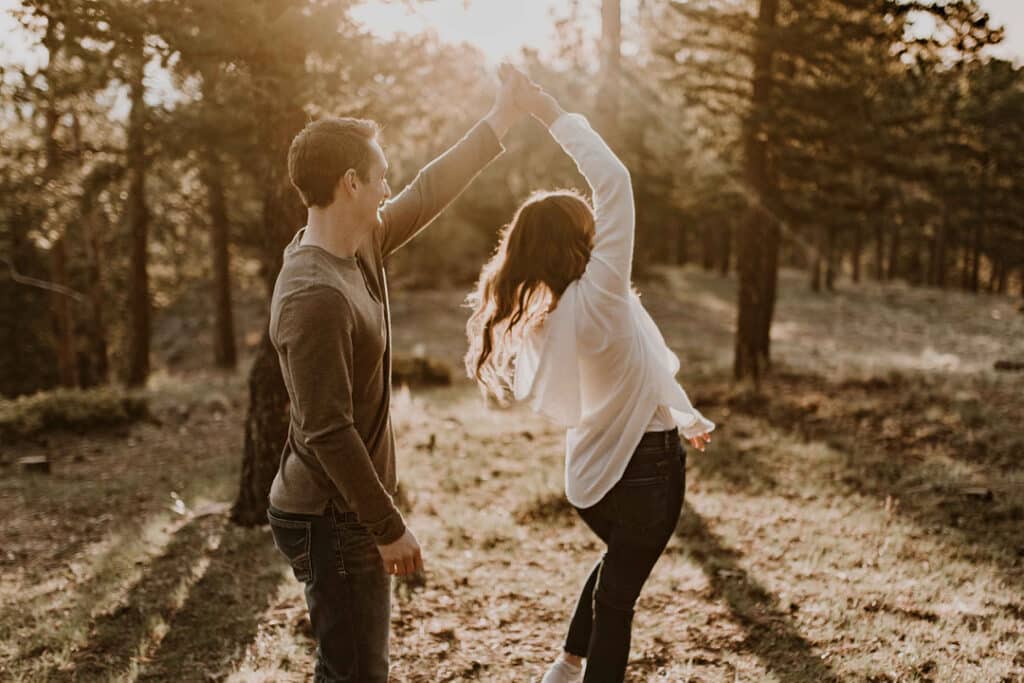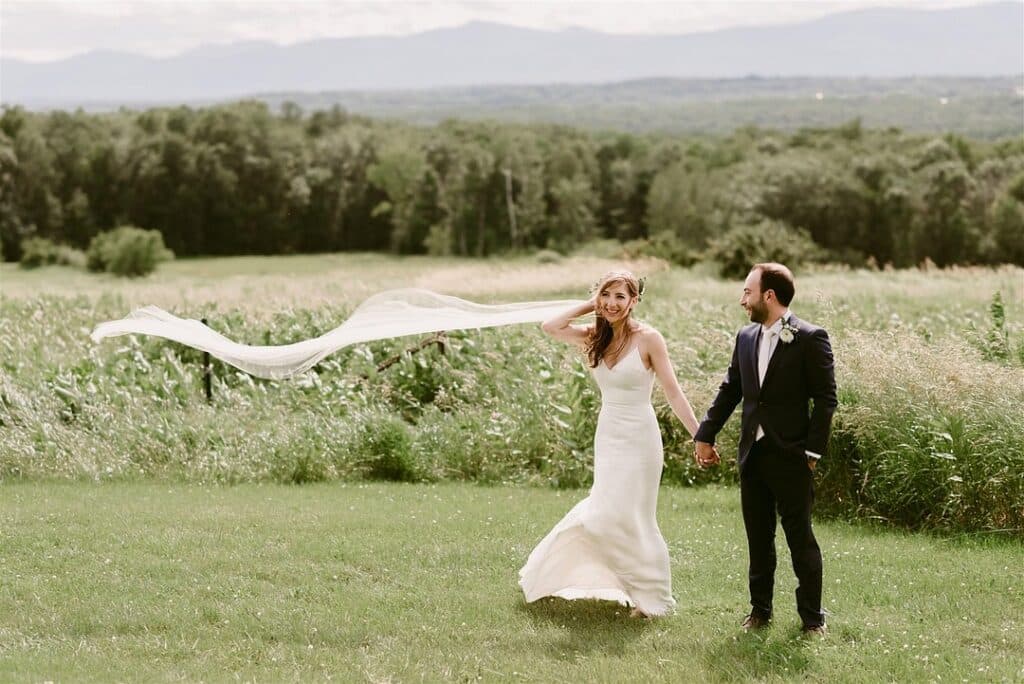How to Get Gorgeous Wedding Photography Lighting Every Time
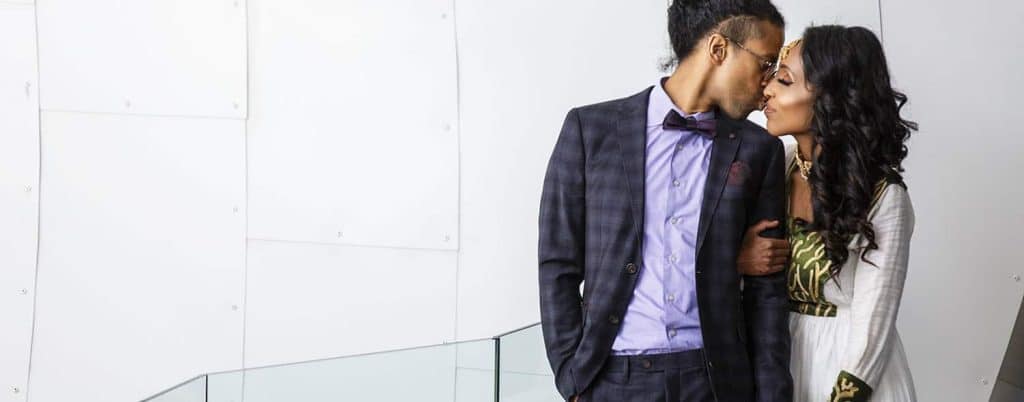
Are you struggling with wedding photography lighting? Don’t worry, you’re not alone. Keep reading to see what is right for you!
It’s the age-old question we run into in the photography world: natural vs. artificial light. I’ve seen many heated debates about this or that type of wedding photography lighting. Some wedding photographers refuse to use flash, and others can’t live without it.
Is there a right or wrong answer? Let’s take an honest look at both sides, and you can make your own decision.
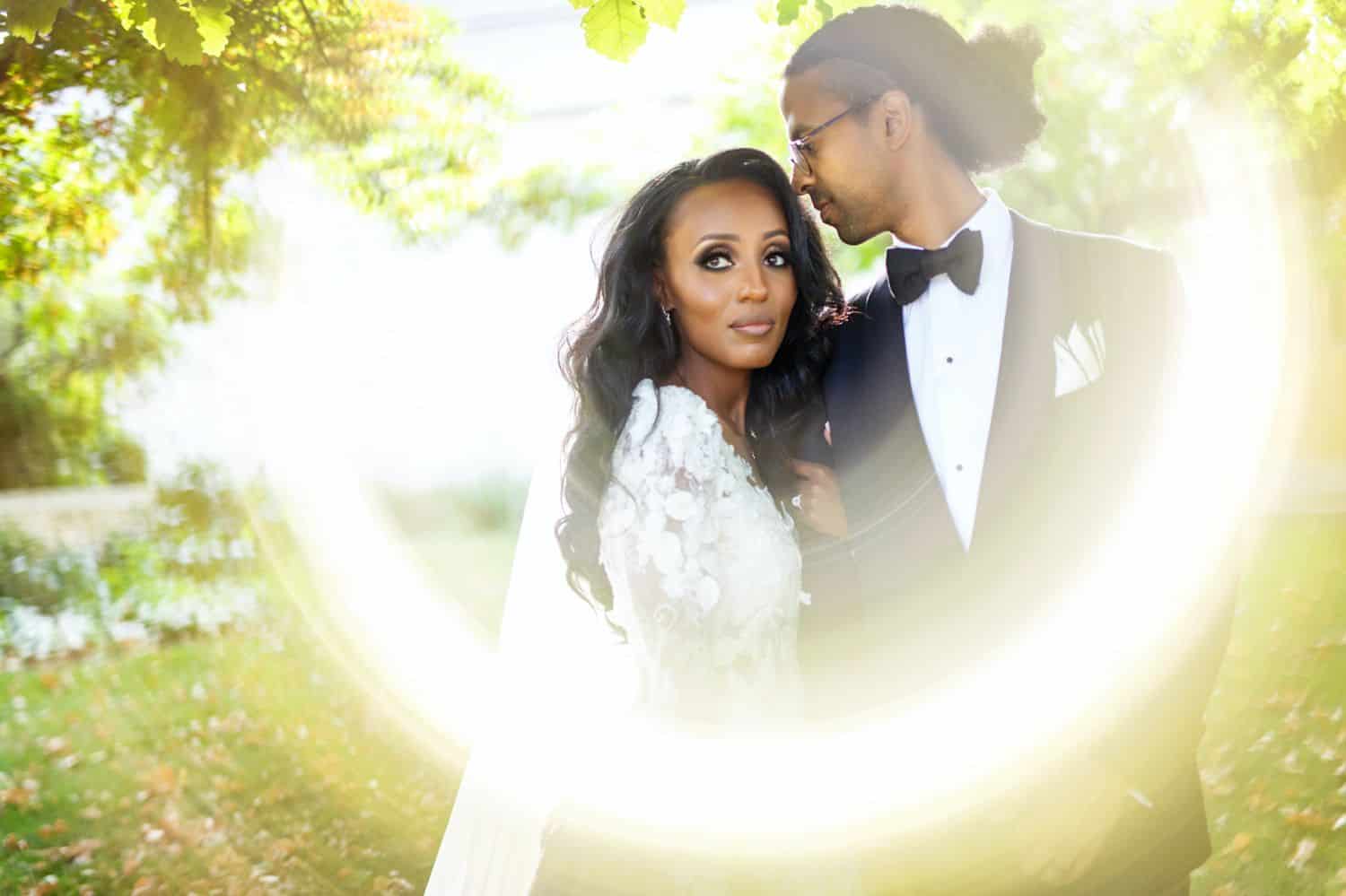
Shandro Photo
Wedding Photography Lighting: Natural (Available) Light
Even the definition of natural lighting has been something wedding photographers argue over. Some wedding photographers will use the term “available light” instead of “natural light,” while others consider natural lighting to be only light from the sun. For our definition, we will say that available or natural light is any light that is already there—that you don’t create yourself. This would be sources like the sun or the light bulbs in the ceiling.
Most wedding photographers start off using only natural or ambient light as a light source. Figuring out how to use a camera and compose a photo is difficult enough. Add a flash and it’s even more to figure out. That’s why many wedding photographers never pick up a flash. Artificial lighting for weddings seems too complicated, and why bother when you can use natural light?
Pros of Using Natural Light
There are many positives to using natural light or ambient light for your wedding photography lighting.
Cost
One major factor is the cost. A decent flash power is going to cost you at least $150, and most wedding photographers will own at least two (I think I own around 6). Then, you have to consider all of the accessories and modifiers. When it’s all said and done, you might spend anywhere from $150 to $1000—and that’s just to get started!
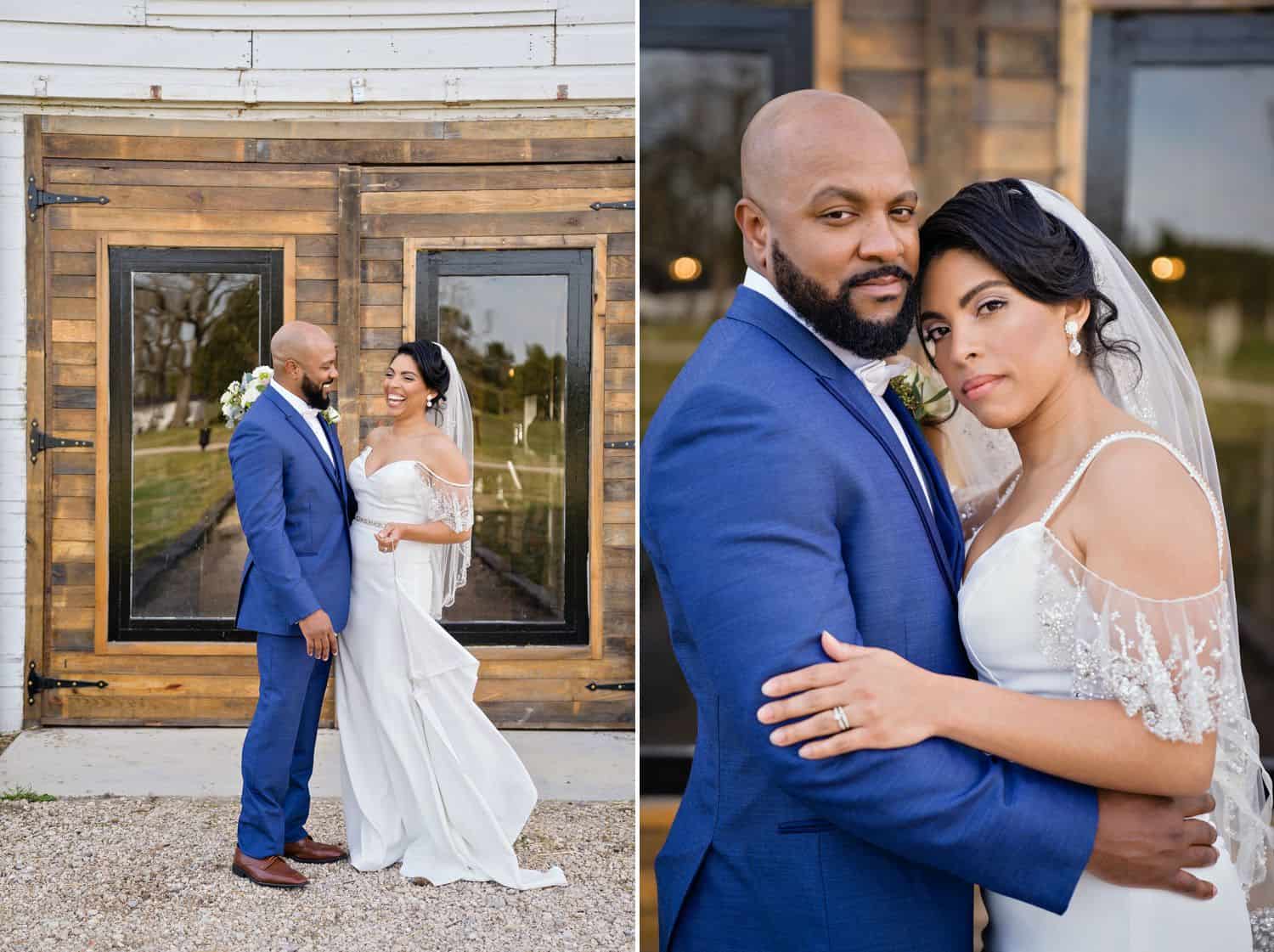
In His Image Photography
Speed and Ease
I try to stick to natural as much as I can during a wedding day. In general, using natural lighting makes things faster and easier. Flashes are another piece of equipment I would have to carry, put on my camera, or adjust. Can you imagine trying to run around a reception or a wedding with a light stand? That’s not going to happen. I want to be free to move quickly during the wedding day, so I can capture as much as possible. You never know when or where something will happen. Often, I find myself sprinting over to one area or quickly dropping down into a squat. I don’t need anything extra getting in the way.
Appearance
Natural light can also look amazing. In general, I think most wedding clients prefer that look. It’s hard to beat window light or light during golden hour. I’ve tried to use flash power to create that look, but most of the time, it doesn’t look as good.
Cons of Using Natural Light
The biggest issue with using natural light as your main source for your wedding photography lighting is you don’t have control. What if it’s cloudy or raining? What if it’s midday and the sun is extremely intense? What if you are in a dark wedding chapel? What if the lights are a weird color or different colors? All of those situations would make natural lighting far from ideal.
If you were only a portrait photographer, then most of these problems wouldn’t be a big deal. You could always pick and choose when and where to do your photos; but wedding photographers don’t have that luxury. We often are moving from one scenario to the next, and we can’t choose when and where we work.
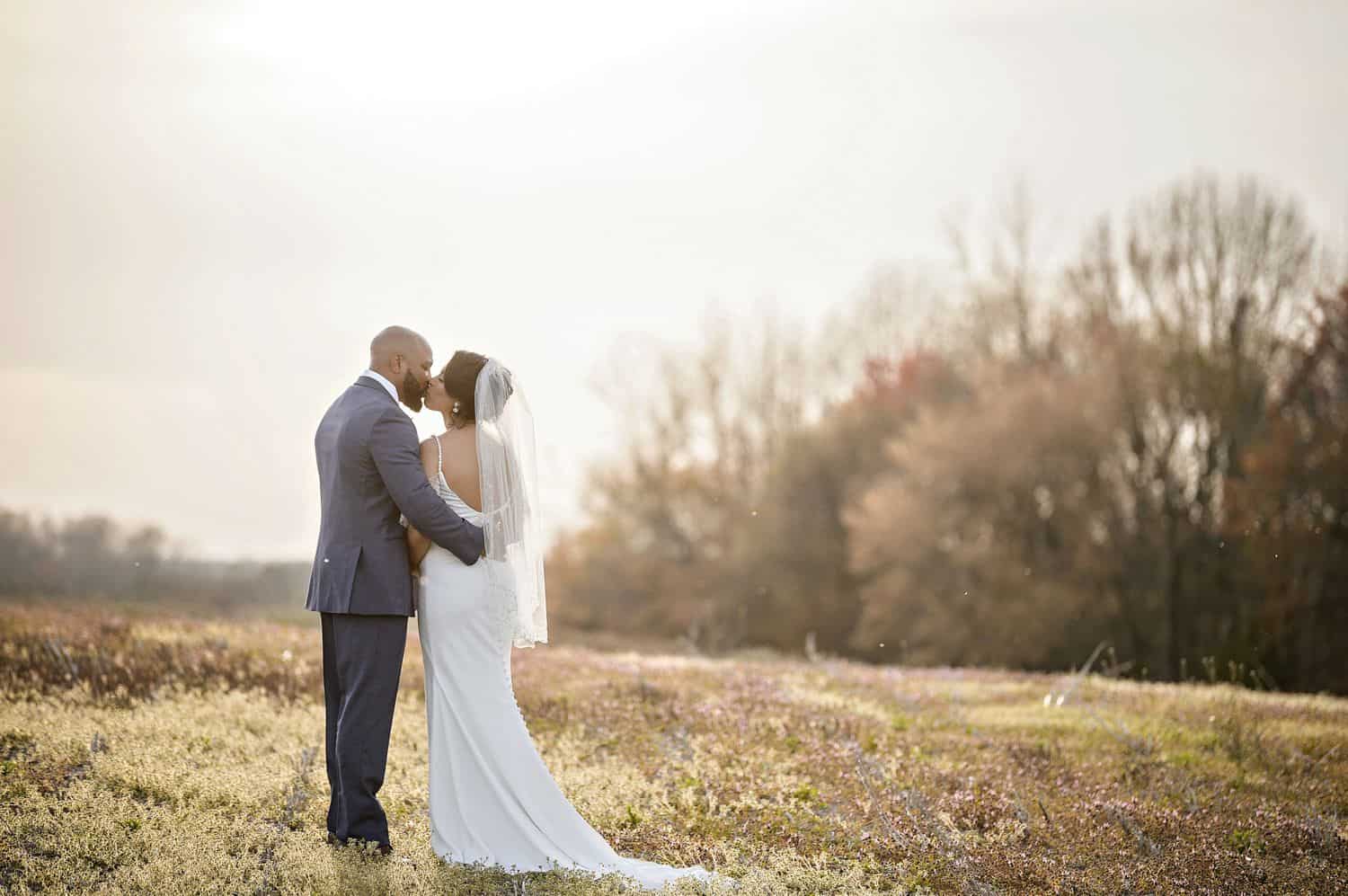
In His Image Photography
Natural Lighting Tips
Since you don’t have control over the light when photographing using natural lighting, you have to find ways to make it work for you. If possible, control when and where you are shooting. Choose a time and location that is going to give you the best light. In general, natural lighting is best early in the morning and toward sunset.
Open Shade
What if you can’t pick the time or location and the sun is overhead and bright? There are two ways to deal with this situation. First, find shade if you can. Look for trees or buildings, and put your bride and groom in that shade. When there is no shade, put the sun behind the subject and a little to the side. The background will most likely be overexposed, but the subject’s face will look great.
High-Quality Lenses
The other time natural lighting is a struggle is in dark situations. This is a common problem for wedding photographers. One way to help with low light is to have lenses that open up to f/2.8 or wider. These lenses can be expensive, but they tend to deliver sharp images, can blur backgrounds (“bokeh”), and can really save you when there’s not enough light.
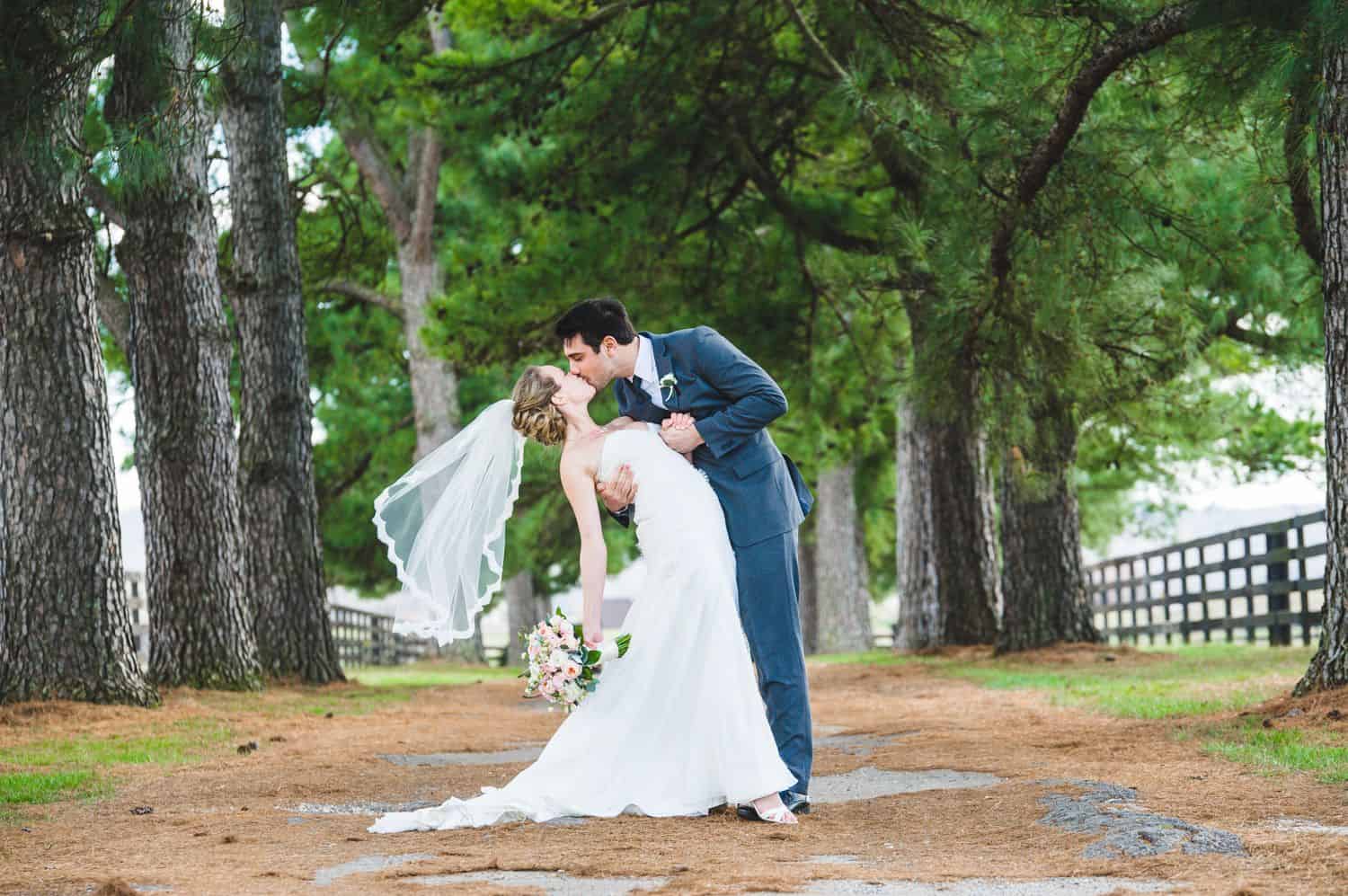
Striegler Photo
Wedding Photography Lighting: Artificial Light
Other photographers are fans of using artificial light or flashes for their wedding photography lighting, but I’ve never met a wedding shooter who uses flash in every situation. Instead, they lean towards a combination of natural light and artificial light. That’s where I fall. When lighting a wedding, I will use natural light as much as I can, but I will bring in flash when I need it or want to do something special. For example, I’ll use natural light during most outdoor portraits, but I always use flash to light the dance floor.
Pros of Using Artificial Light
The biggest plus of artificial light is that you aren’t limited to what light you are given. You can always add light to what you are given or use a flash as the main light source like in the dance floor. If there’s something lacking, I can put an off-camera flash on a light stand, and I’m good to go. It is nice to have that kind of control and flexibility.
Fixing Bad Situations
I can’t tell you how many times artificial light or flash has saved me at a wedding. The majority of the time there isn’t enough light, or the light is coming from directly overhead, causing shadows in the eyes. I have an on-camera flash for the majority of the reception photos, and I aim the flash at the ceiling or a nearby wall where the flash bounces back onto the subject. It’s nothing fancy, but it makes the photos bright and clean.
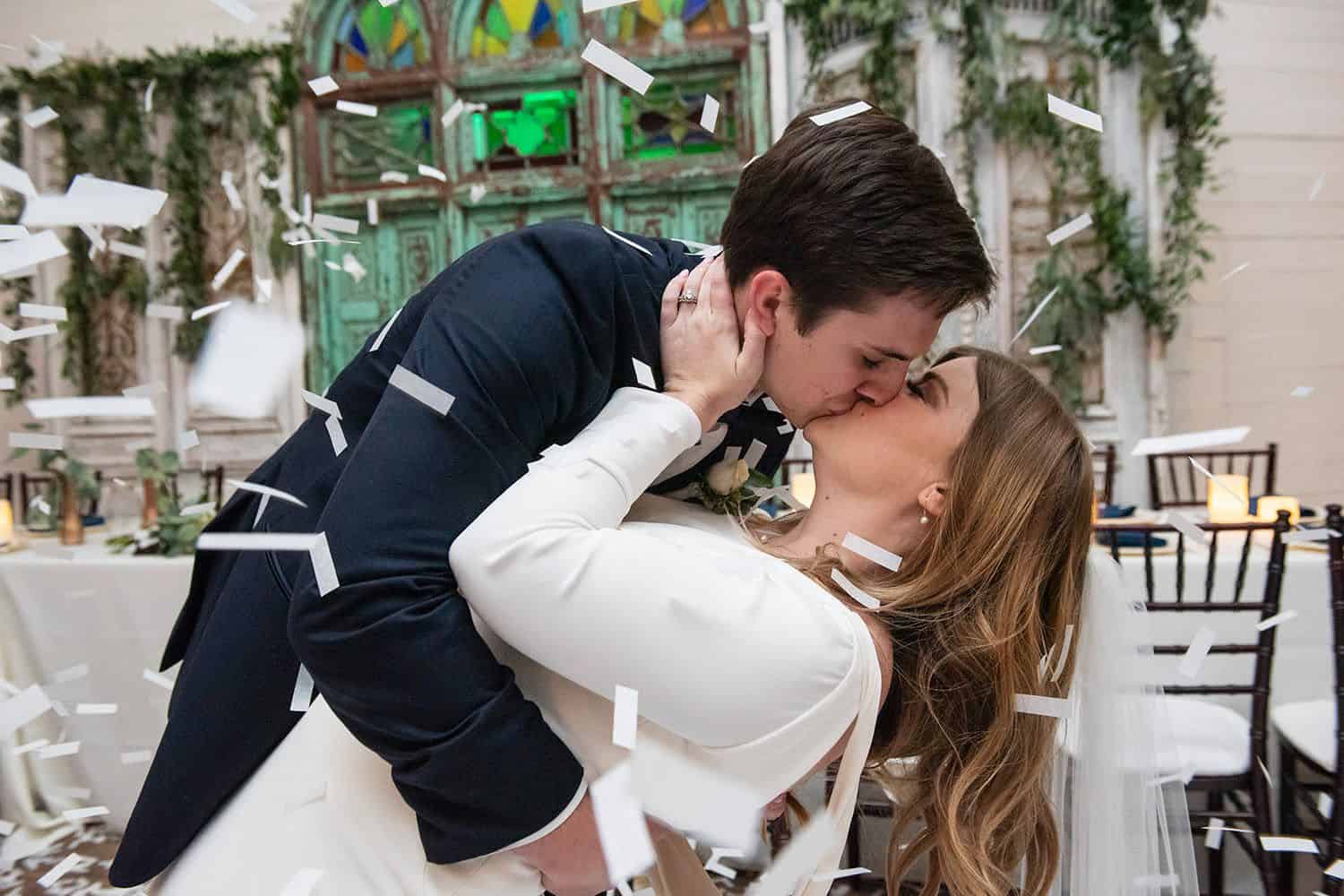
Bryan Striegler
The other time I use artificial light to fix a situation is when there is strong backlighting. In those situations, if I expose for the face, the background will be overexposed and often white. By adding flash to the front of the subject, I can match the exposure for both the subject and the background. This way, you can see beautiful people and beautiful skies.
Creative Lighting Options
Most wedding shooters will only use flash to fix bad situations, but I like to take it a step further and use flash to be creative. The great thing about this is that now you can create images that really separate you from all the other wedding genre photographers. It’s these wow images that clients want to have.
When doing creative lighting portraits, I mainly use two wedding setups:
- one light in front of the subject to light their faces or whole bodies
- one light behind the subject to create a silhouette
In general, I tend to use these lighting setups in darker situations to create a more dramatic look and add focus on the bride and groom.
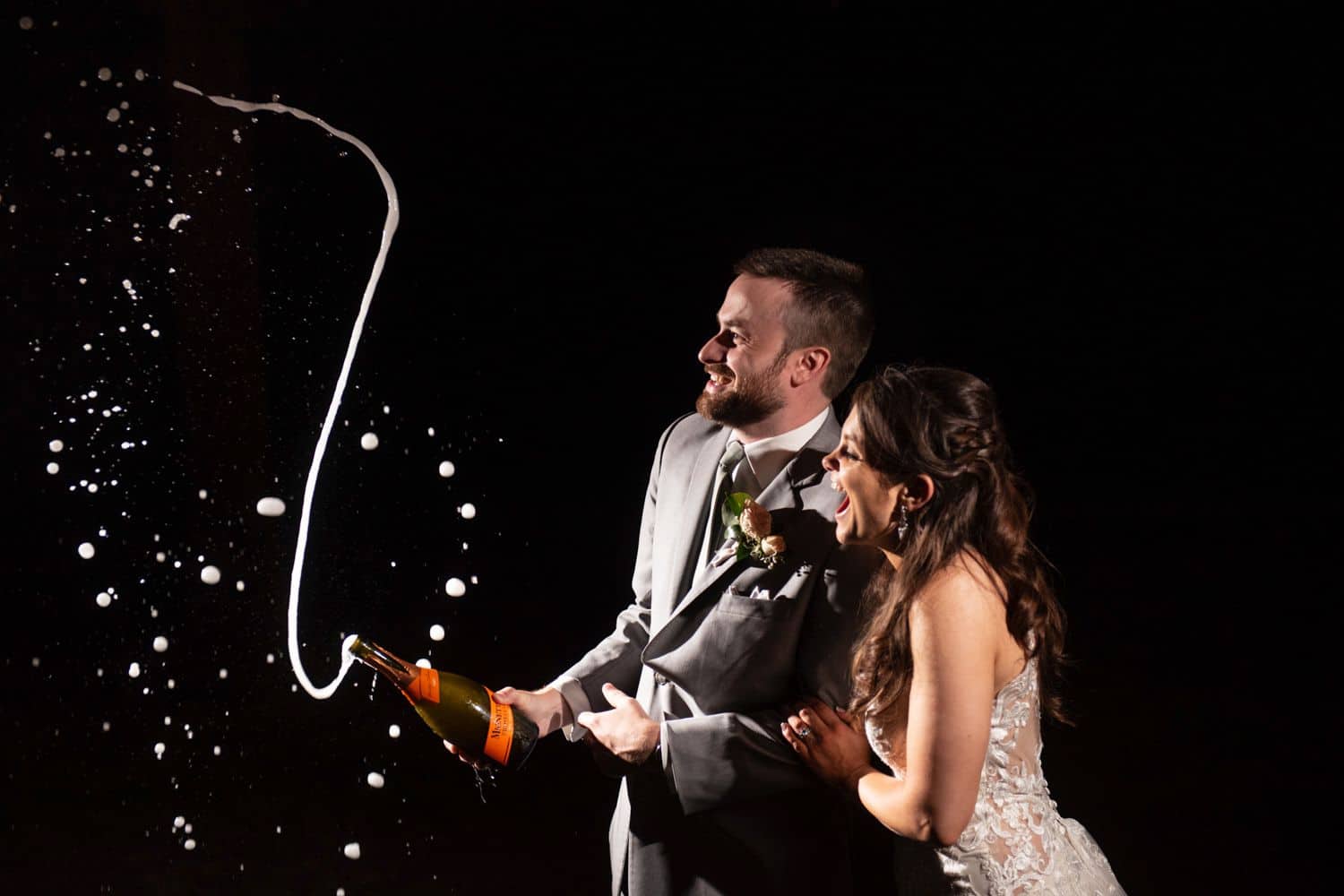
Striegler Photo
There are unlimited variations on what you can do with these two setups. I’ve had the couple in front of the venue, people writing with sparklers, confetti being shot in the air, and plenty of dips and kisses.
The best thing about using flash creatively is you can create these photos in almost any situation. It doesn’t matter how cluttered the room or unflattering the background is. You have that kind of control!
Cons of Artificial Lighting
As much as I love artificial lighting and flash, there are several things that make it difficult. The biggest barrier is learning how to use it. It’s another piece of equipment with different settings. In many cases, you also have to buy a transmitter and figure out how to make that work, as well. It can be very confusing.
Besides that, it the use of artificial lighting can double or triple your equipment. When I’m bringing in my equipment for a wedding, flash equipment is a trip all by itself. I’ll have a bag of flashes in one hand and light stands in the other. Then, you have to store all of this equipment when you aren’t using it. That requires so much more than a few camera bodies and lenses.
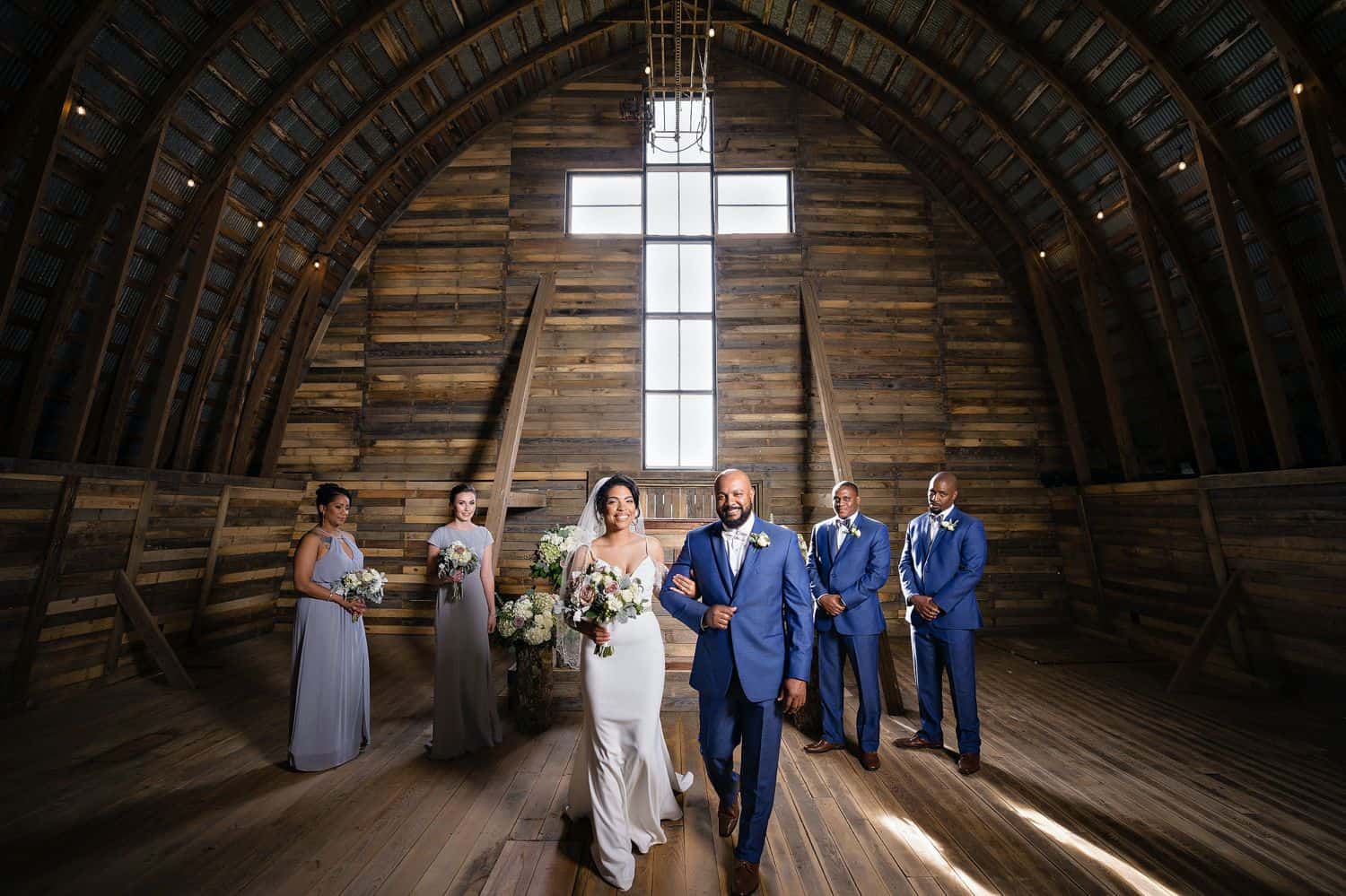
In His Image Photography
Artificial Lighting Tips
Artificial lighting seems confusing, but it doesn’t have to be that way. Start off simple. Use one on-camera flash, put it on TTL, bounce it off the ceiling or a wall, and only use it when natural light isn’t working.
Shutter Speed
A common issue new flash users run into involves shutter speed. If you see a black bar going across your image, your shutter speed is too high, and your image is being blocked by the shutter as it opens or closes. Lower it to 1/250th or slower and the bar should disappear. (Your camera manual will tell you what your sync speed is!)
Practice
One of the biggest mistakes you can make is going into a shoot or wedding and trying something for the first time. Make sure you practice at home and feel confident before the real event. Find a person to be your subject or you can even use an object. Practice and practice some more until you are confident in what you are doing. Weddings are too important to be messing around with trial and error!
Choosing Your Gear
The other big issue is buying all of that equipment. Before you buy anything, see if you can rent or borrow it first. This way, you can try everything out and see what you like before spending your hard-earned money.
Also, don’t buy a ton of gear at once. Most likely, you don’t need an entire studio setup when you are just starting. Use what you have, and when you learn more and improve, then add more gear to your lighting setup.
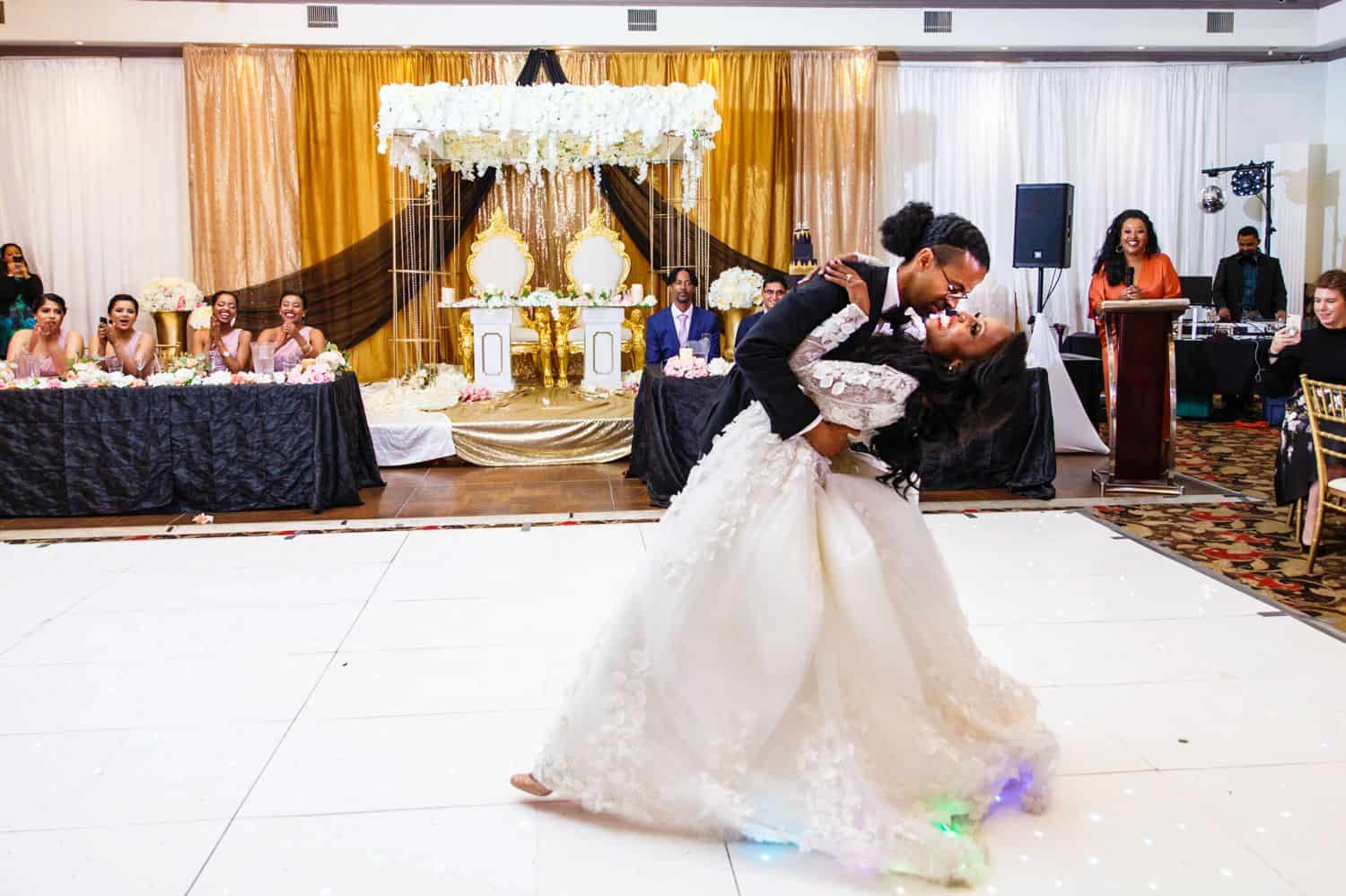
Shandro Photo
Tips Before You Buy Wedding Lighting Equipment
Over the years, I’ve tried so many different types of lighting equipment and modifiers. Again, there is no right answer. It depends on the person. Here are a few things to consider before buying any lighting equipment.
- How often will you use it?
- Is it easy to use and take with you?
- How much does it cost?
- Will it make a big difference and make you money?
- Will it solve any wedding photography problems you currently have or make things easier?
My Favorite Lighting Equipment
For the longest time, I used Nikon brand flashes. They are awesome, but I found that they were really expensive, and I hate dealing with AA batteries! About two years ago, I switched to the Flashpoint brand (also sold as Godax), and I’ve been extremely happy. I currently own the:
- Flashpoint XPLORE 600
- eVOLV 200
- Zoom Li-on R2
They all are different sizes and powers, and that’s why I own all three.
The great things about these Flashpoint flashes are the price, the rechargeable battery, and they all work together. The Zoom is at least $100 cheaper than some of the Nikon flashes and up to $300 less in some cases. The batteries are wonderful. Not only are the rechargeable, but they also last longer than any other flash I’ve owned. It’s also nice that all of my flashes work together. I can control all of them with the same remote and use them all at the same time.
Flash Accessories
There are millions of flash accessories out there for photography, which can be extremely overwhelming and confusing. I mainly stick to products from MagMod. They can quickly attach to your flashes through the built-in magnet system, and most of the system is small and lightweight. I use MagGrids at every wedding, and I will often pull out the MagBox for couple portraits.
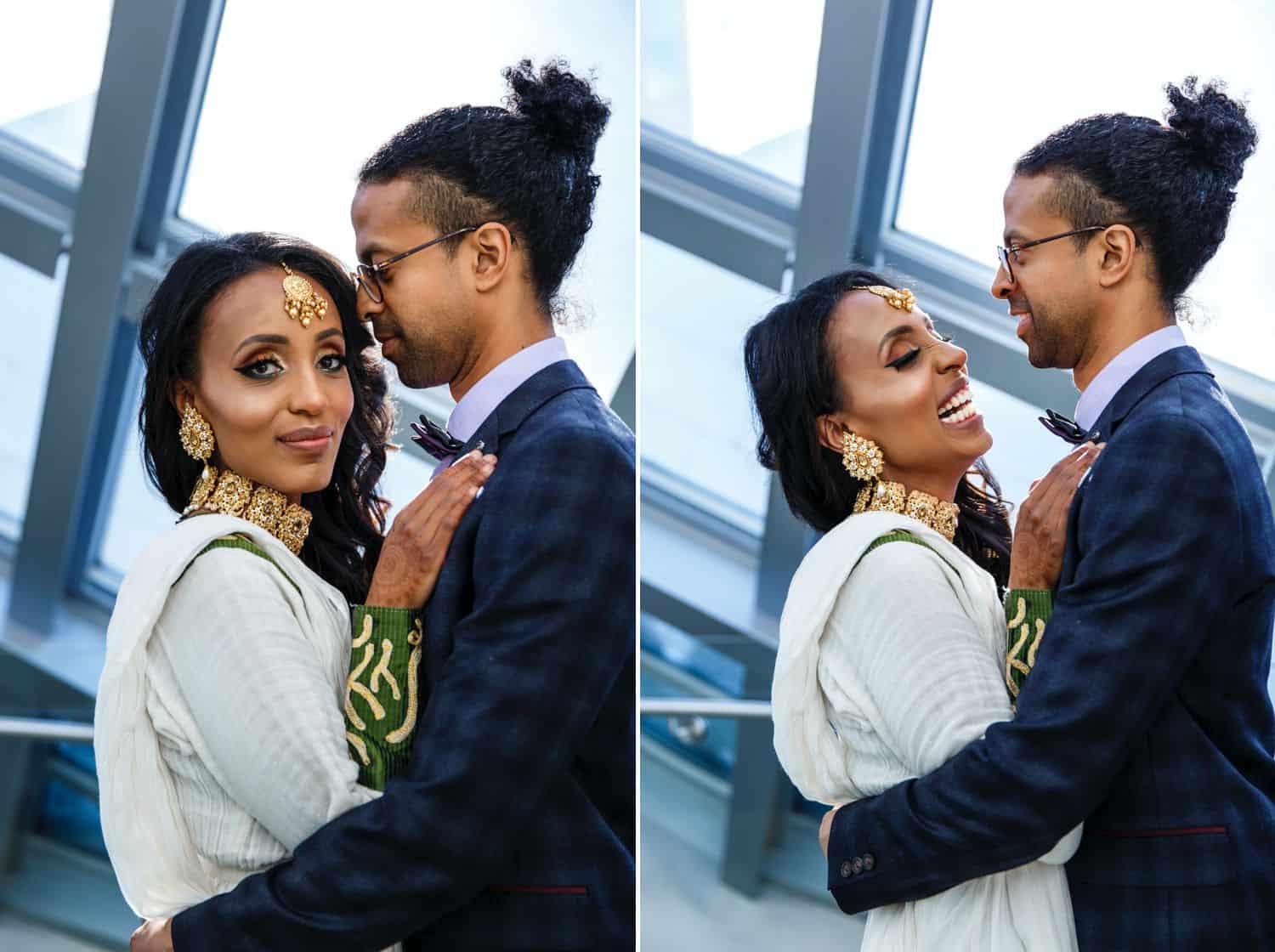
Shandro Photo
Continuous Lights
Sometimes I find myself in a situation where a flash is too powerful, or I need to see where the light is hitting. In these cases, I use continuous lights. The most popular continuous light out there for weddings is the Icelight. I’ve used it before, and it is nice, but lately I’ve been using Dracast Boltray. They are more powerful, have adjustable color temperature, and easily fit on a light stand.
Other Things to Consider about Your Wedding Photo Lighting
When it’s all said and done, you have to do what’s best for you and your couple. Create your own style of photography and don’t feel like you have to do what everyone else is doing. This might mean you only use natural light, or maybe you use artificial light as well.
It’s also important to know that not everyone will like your style, and that’s okay. When your style is clearly defined, you will attract the people that love what you do and are willing to pay for it.
People will always have strong opinions about wedding photography lighting. When it comes to natural vs. artificial light, I don’t think there is a right or wrong answer. It really will depend on your shooting style, personal preference, level of experience, and budget. Also, photography for weddings is very different from other types of photography like landscapes. You might find you choose natural for one and flash for another.
No matter what you choose, if you work hard to perfect your style of shooting, you can capture those important moments and provide the service all wedding couples deserve.
Written by BRYAN STRIEGLER | Photos by IN HIS IMAGE PHOTOGRAPHY, SHANDRO PHOTO, and STRIEGLER PHOTOGRAPHY
Bryan Striegler is a wedding photographer who loves superheroes, sports, and skittles. Along with his saint of a wife and their crew of kids, Bryan lives in northwest Arkansas where, in his free time, he’s constantly searching for the next great Netflix binge.


